Today was a day of tests and drills in preparation for operations in the Open Sea. I went to the Fo’c’s’le in the ship’s bow ( aka the Deck department mural gallery ) and I ran into the fourth deck division (4D) third class who was learning how to splice line. For some it was easy understanding the process of unweaving the three strand cordage, flipping the line around, and weaving the ends back into themselves, this can be used to make an eye which can be used on a cleat when docking, to finish the end of cut pendants, or it can be used to join two lines together. Those that had an easier time took the opportunity to help their shipmates learn how to splice.
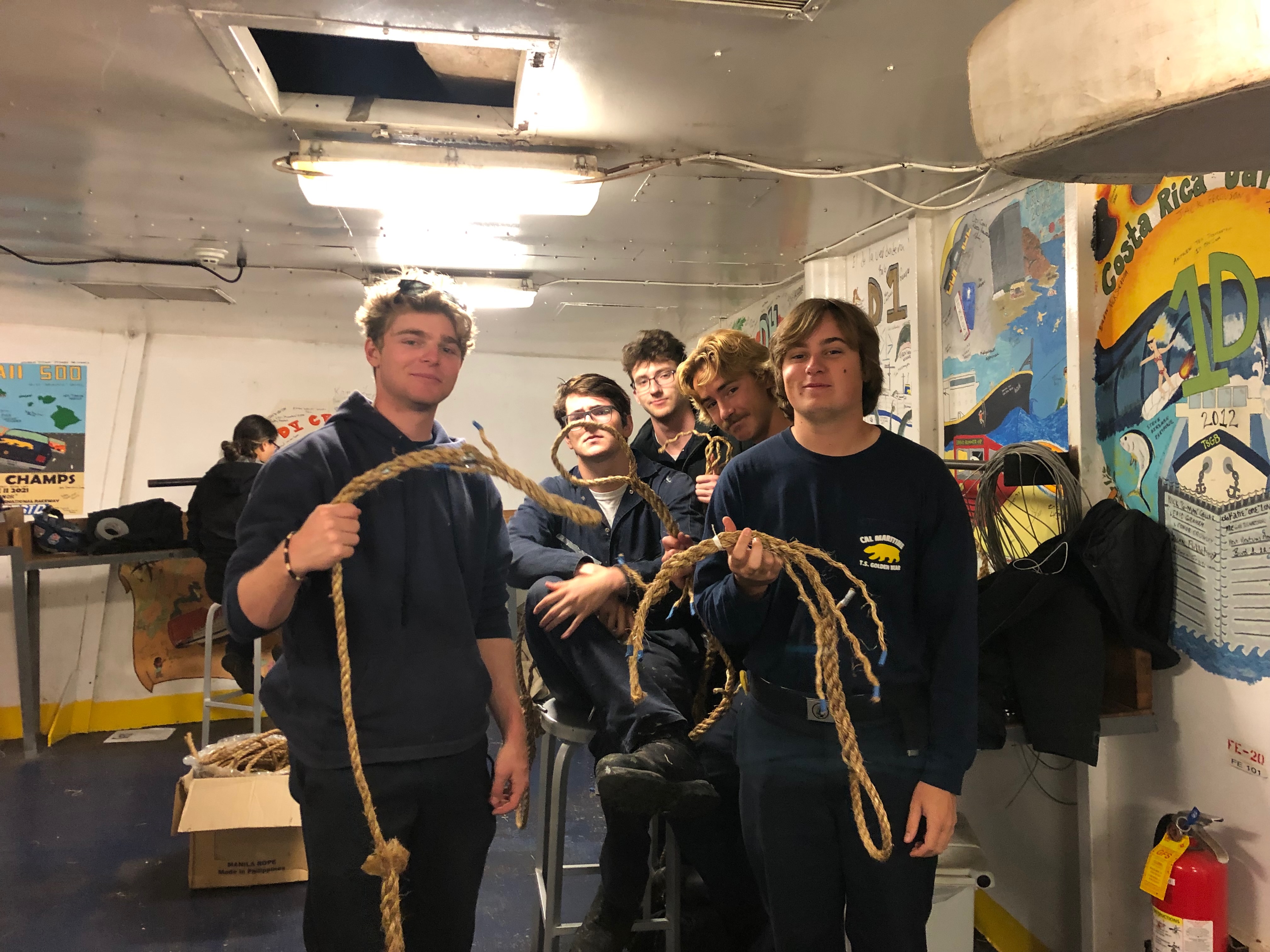
Cadets work together to splice line during their Practical Training rotation
While I was in the mural gallery, I had the opportunity to look at the paintings that
have been done over the years and it was amazing to see the history of the ship and
know that within each of the paintings are friendships and inside jokes that were
developed over the duration of cruise, and I can only wonder what will be going on
the murals this year.
The Engine department mural gallery is “down below” in the Machinery Casing.
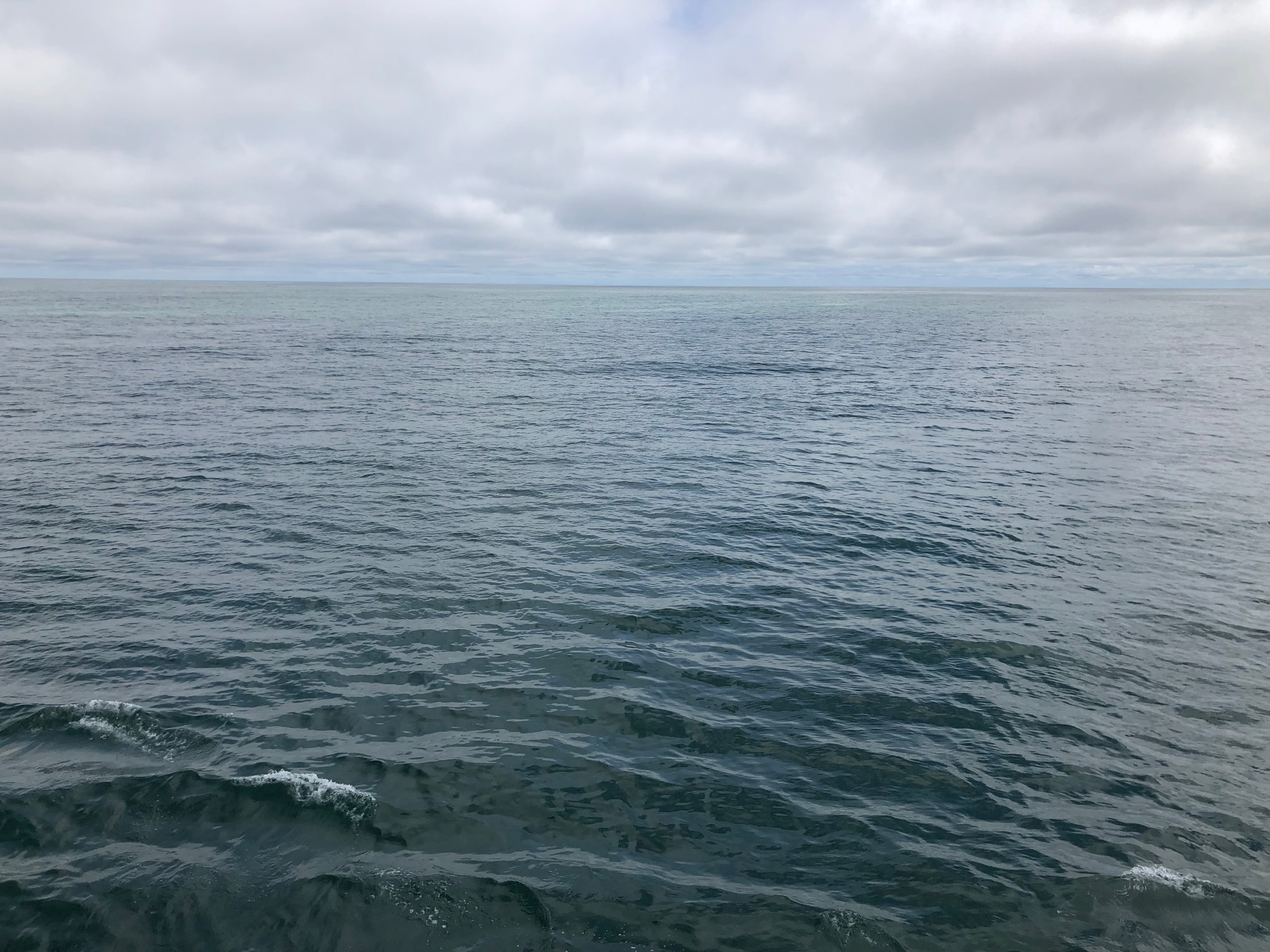 |
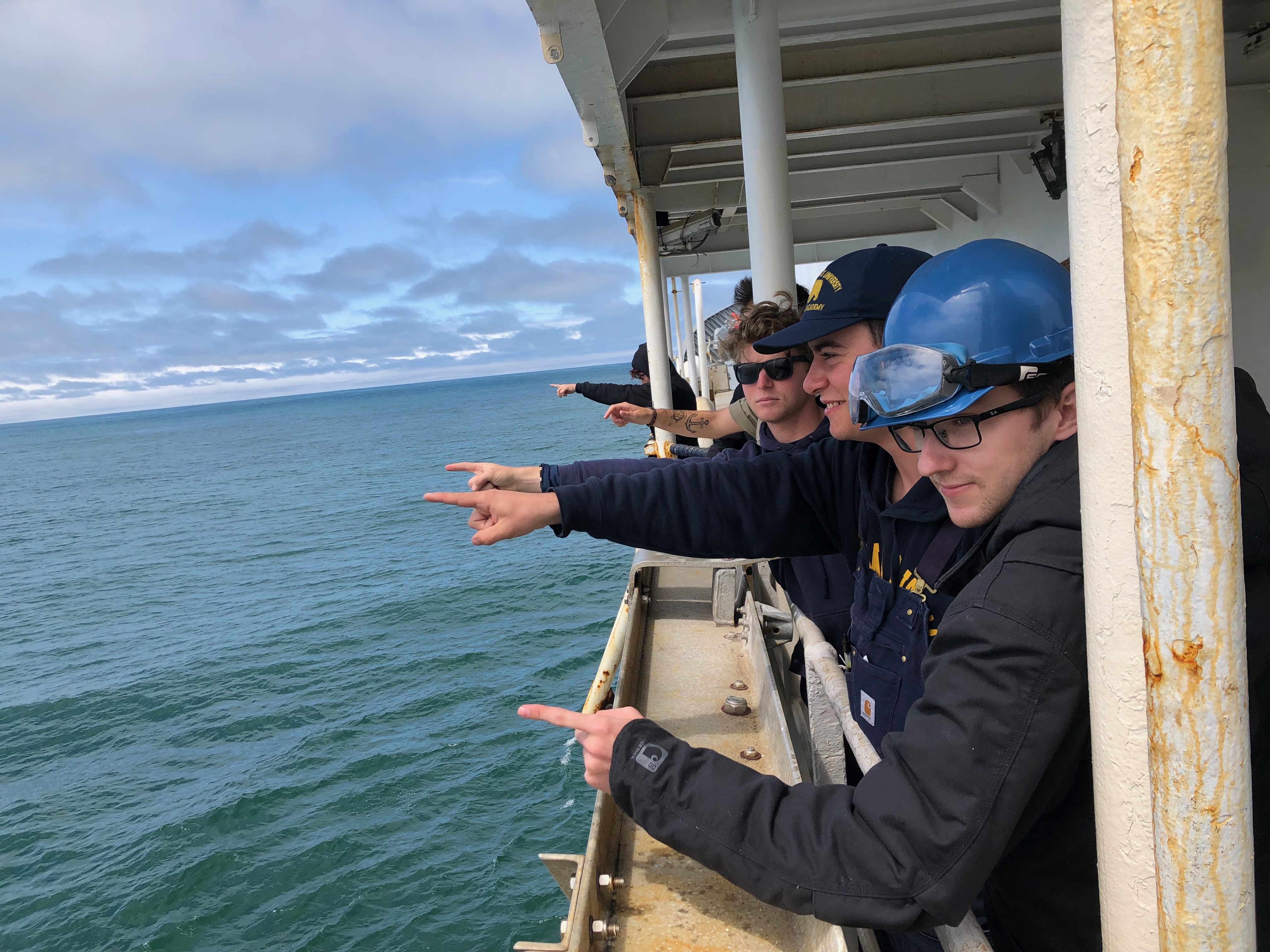 |
| It is hard to spot something small and green like a melon out in the vast open ocean | When cadets have sighted what they think is the melon, they all point to make sure thy dont lose sight of it. This is especially important when there are swells |
Right after lunch, we had the first drill of the day which was the Man Over Board drill. When there is a “man overboard” the morse code letter “Oscar” ( three prolonged blasts ) is sounded on the ship’s whistle. The goal is to get out on deck and get as high as possible to try and locate the missing person, and jettison flotation such as lifebuoys. In this instance, instead of a dummy ( traditionally nicknamed Oscar ) being thrown overboard, there was a watermelon thrown overboard. The melon, affectionately referred to as “Cadet Melon” was really challenging to find. While everyone was on deck searching, all their fingers went out and they pointed to something floating in the water, but upon further investigation, it was a lone fishing buoy. Everyone had gotten close to giving up hope until someone began shouting “STARBOARD SIDE! STARBOARD SIDE!” everyone made way quickly to the starboard side, and out in the water was a little green melon floating among the vast blue ocean. It was quite the challenge to find the melon, but in the end, “Cadet Melon” was saved due to the close attention and impeccable vision of the cadets, staff, and faculty on “sharp lookout”.
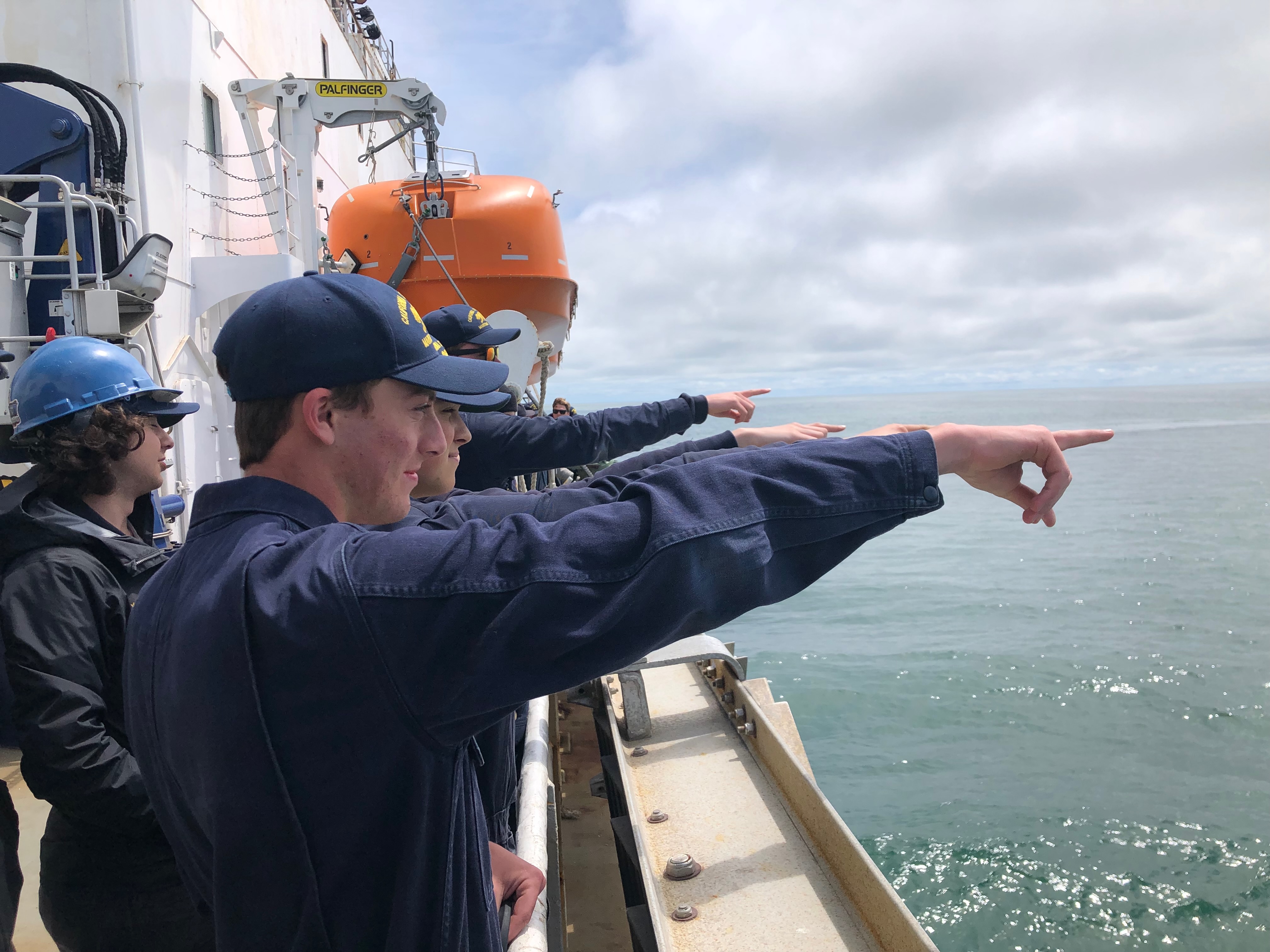
Cadets point to what they think is the melon, but it was actually a fishing buoy
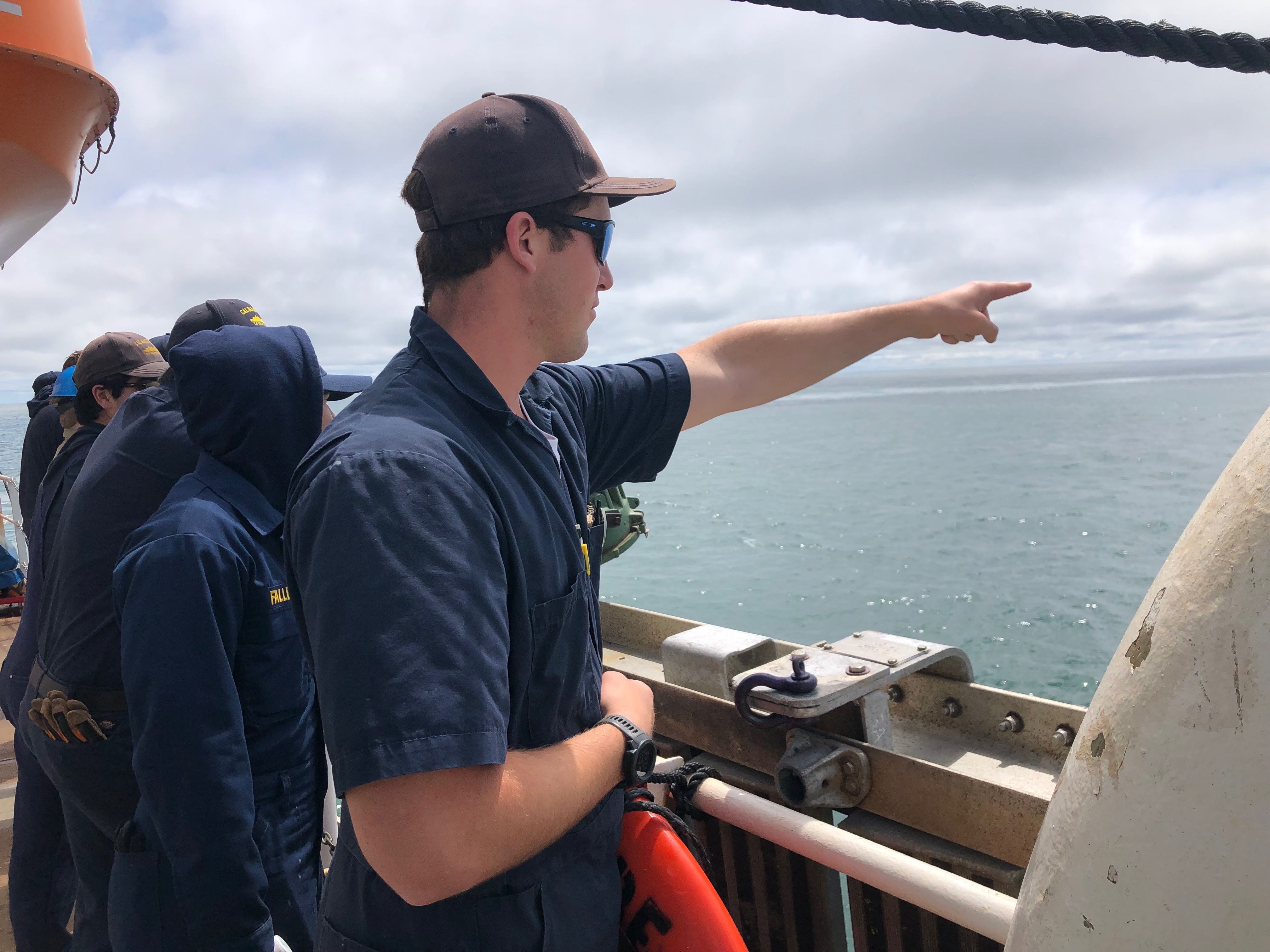 |
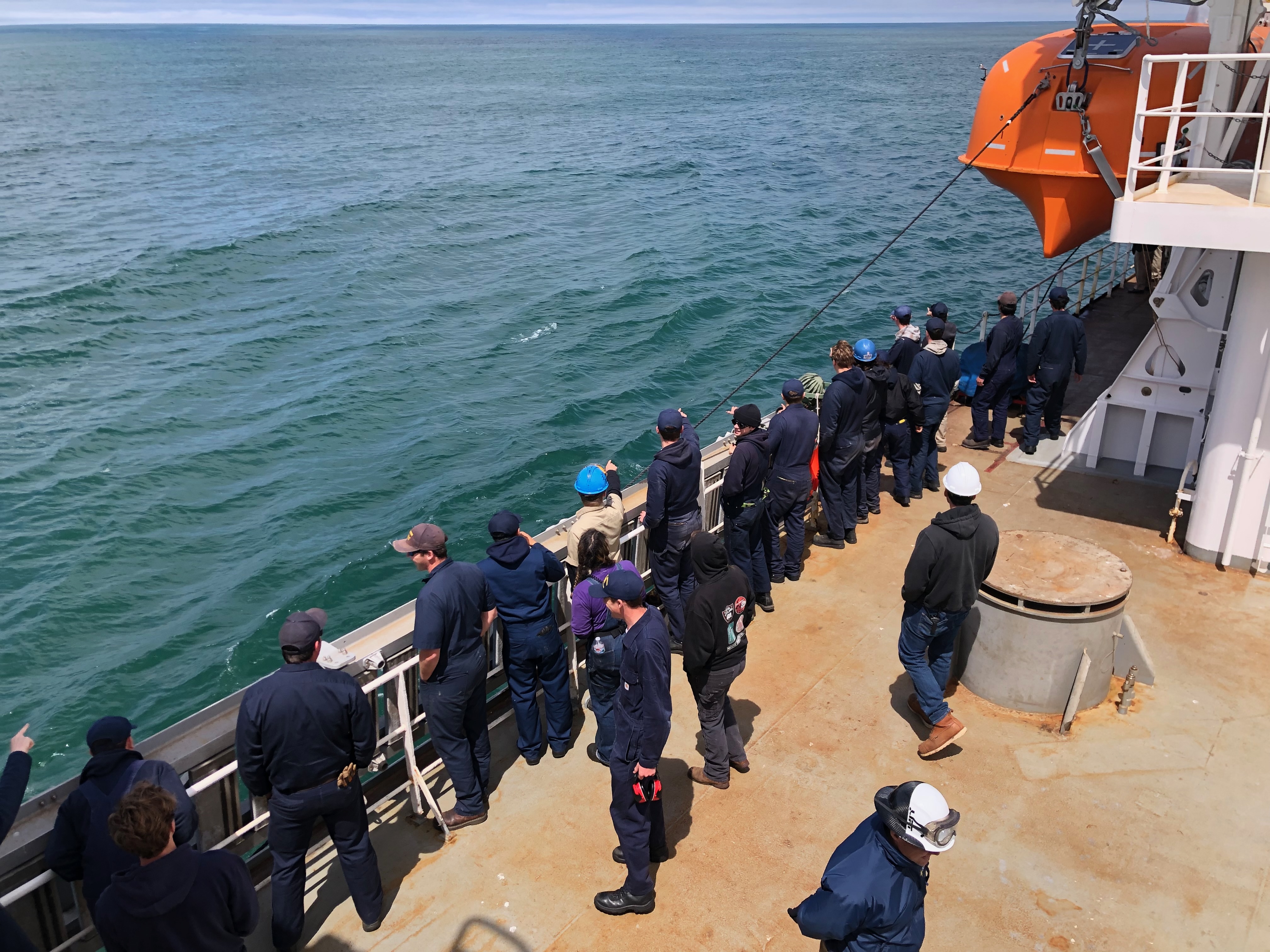 |
| 1C Cadet Rob Gehring points out to make sure he doesnt lose sight of the missing melon | Cadet Melon was spotted and everyone on deck rushed to the starboard side to make sure he doesn't get out of sight |
The second drill of the day was the Emergency Steering Drill, from “After Steering” which is where the rudder is controlled locally as opposed to being controlled remotely from the bridge as it is in normal conditions. It is standard to do this test either quarterly, or within twenty-four hours of entering U.S. waters from the open Sea. To begin the drill, the sound powered phone was hooked up and there was testing with the bridge. Since the phone is powered by sound much like two cans tied to a string, it is necessary to talk very loudly into the phone to ensure communication is as clear as possible. Then the electrohydraulic system between the Helm on the bridge and the rudder was disconnected so steering could be done manually.
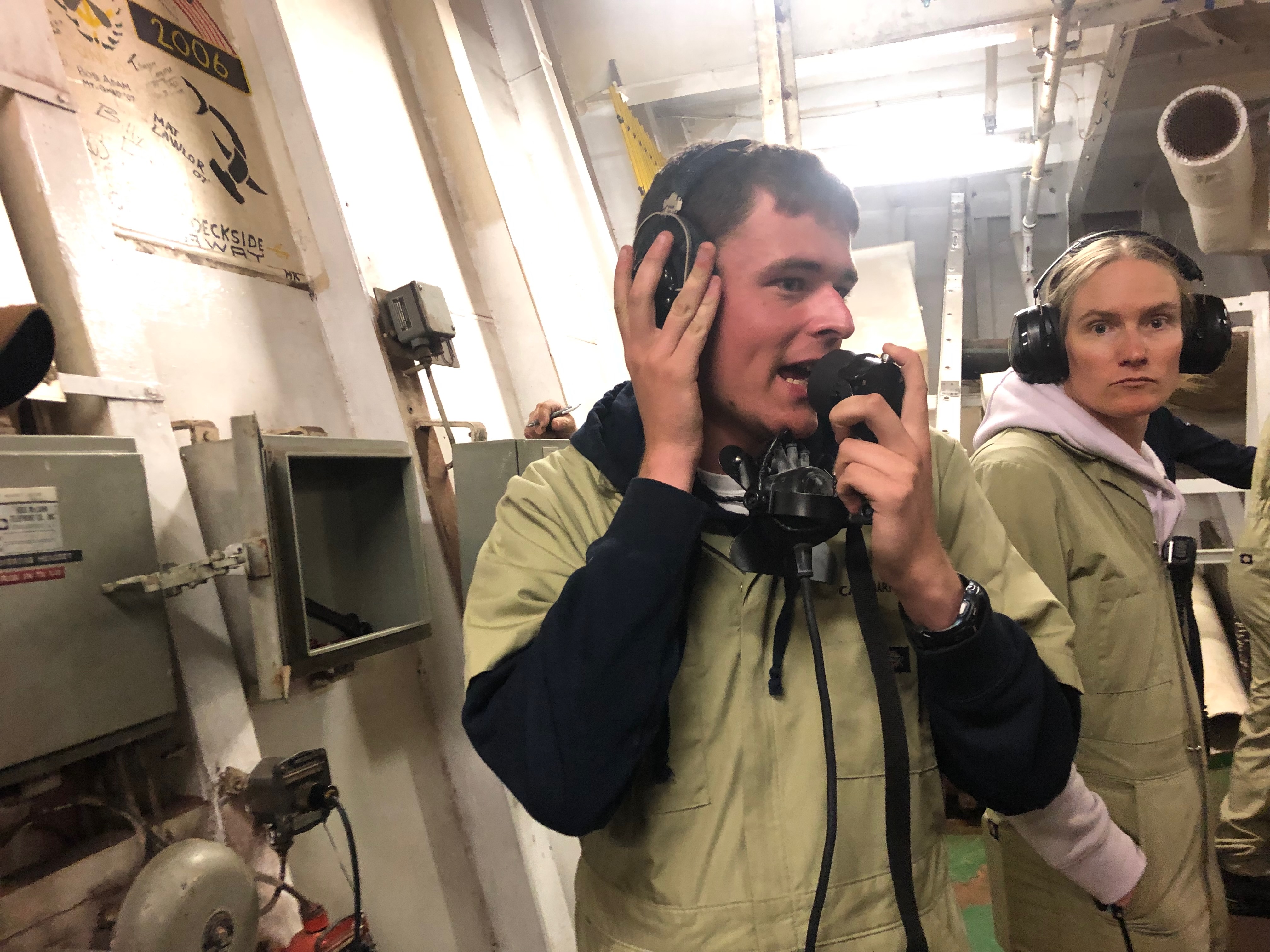
3C cadet Dan Golinski establishes communication with the bridge through the sound powered phone
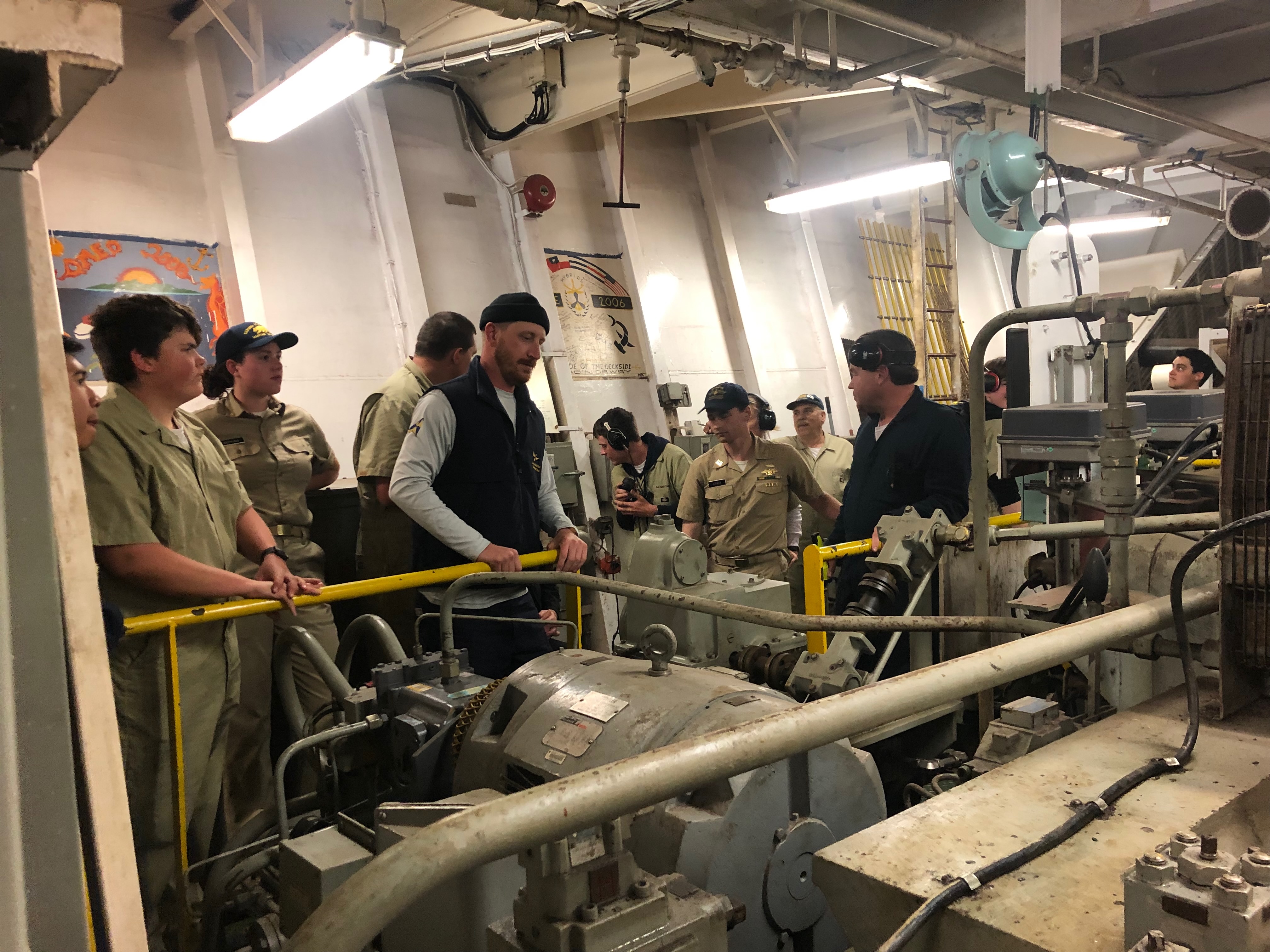 |
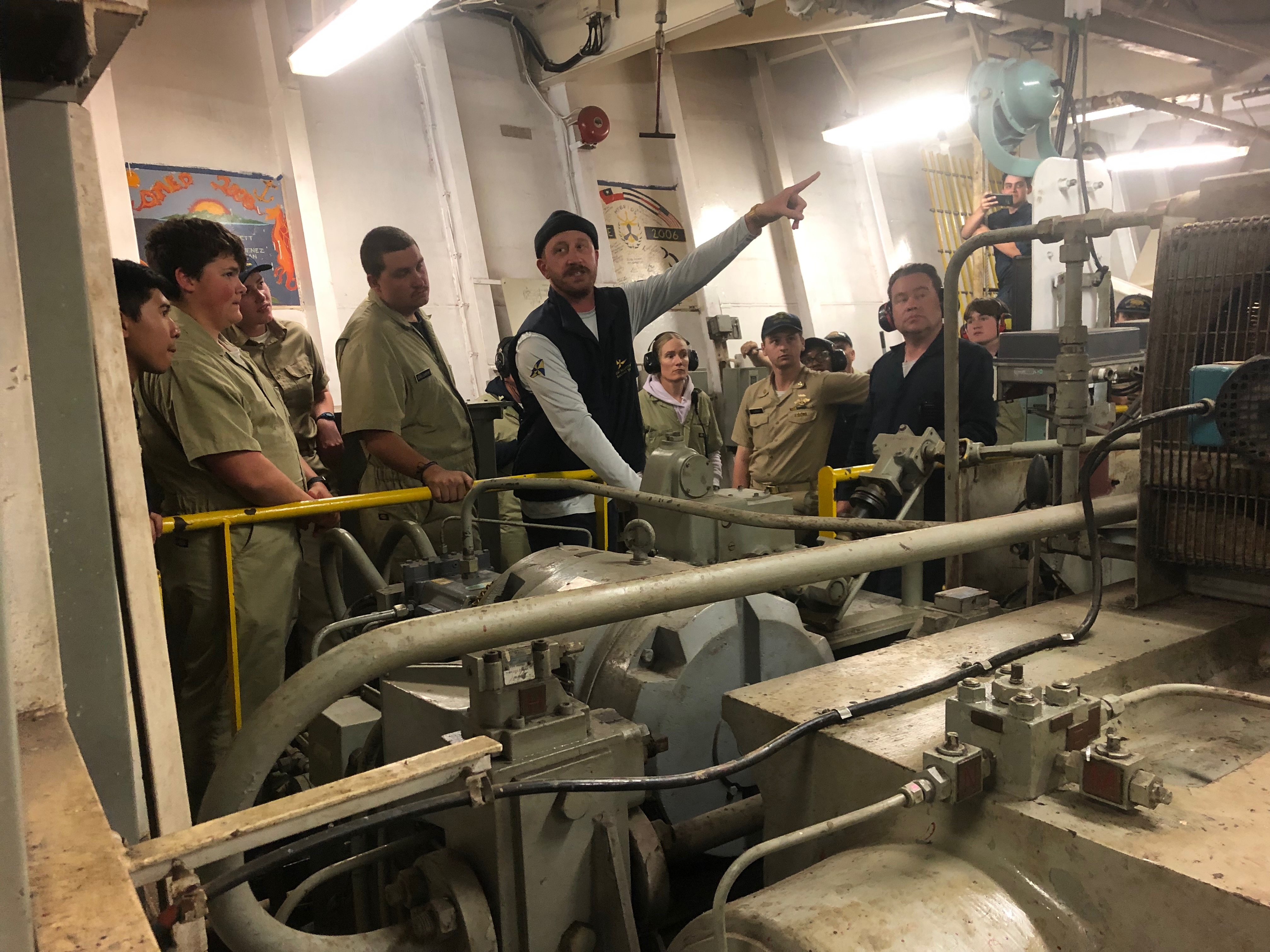 |
| Ramsey Ali awaits orders from 3C cadet Dan Golinski on the comms | Ramsey Ali shows all the cadets what they need to do to execute orders given by the person on the comms |
The commands are sent through the phone and given to the person operating the “steering gear” - they must repeat the command to ensure it was heard correctly, move the “trick wheel” to the correct position, and then call out again when the rudder is in the correct position. The aft steering space is very loud- so everyone in the room giving and taking commands were instructed to yell to make sure nothing was lost among the noise.
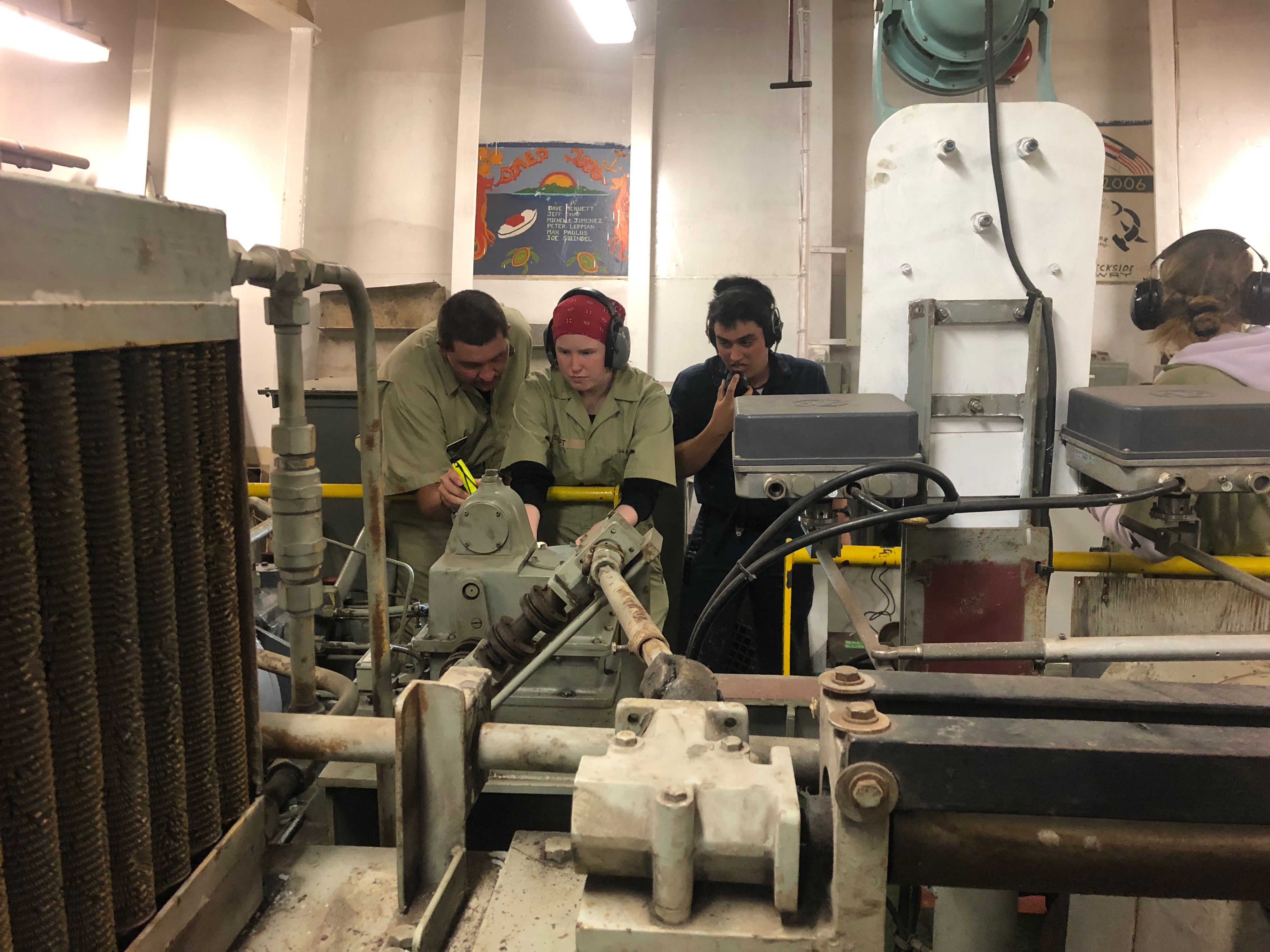
4D CO Jake Schollenberg helps 3C engineer Kierney Senft learn how to control the rudder
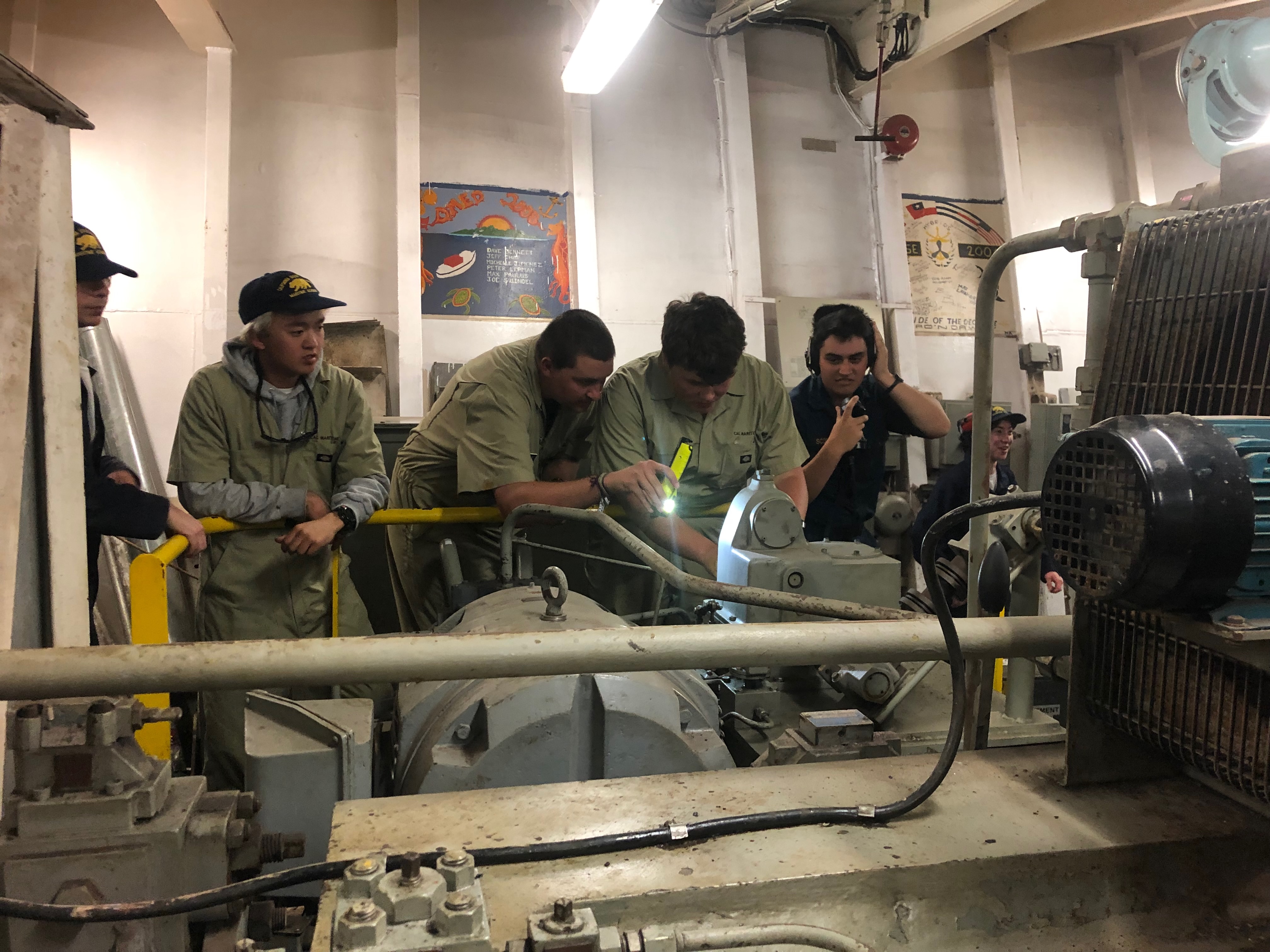 |
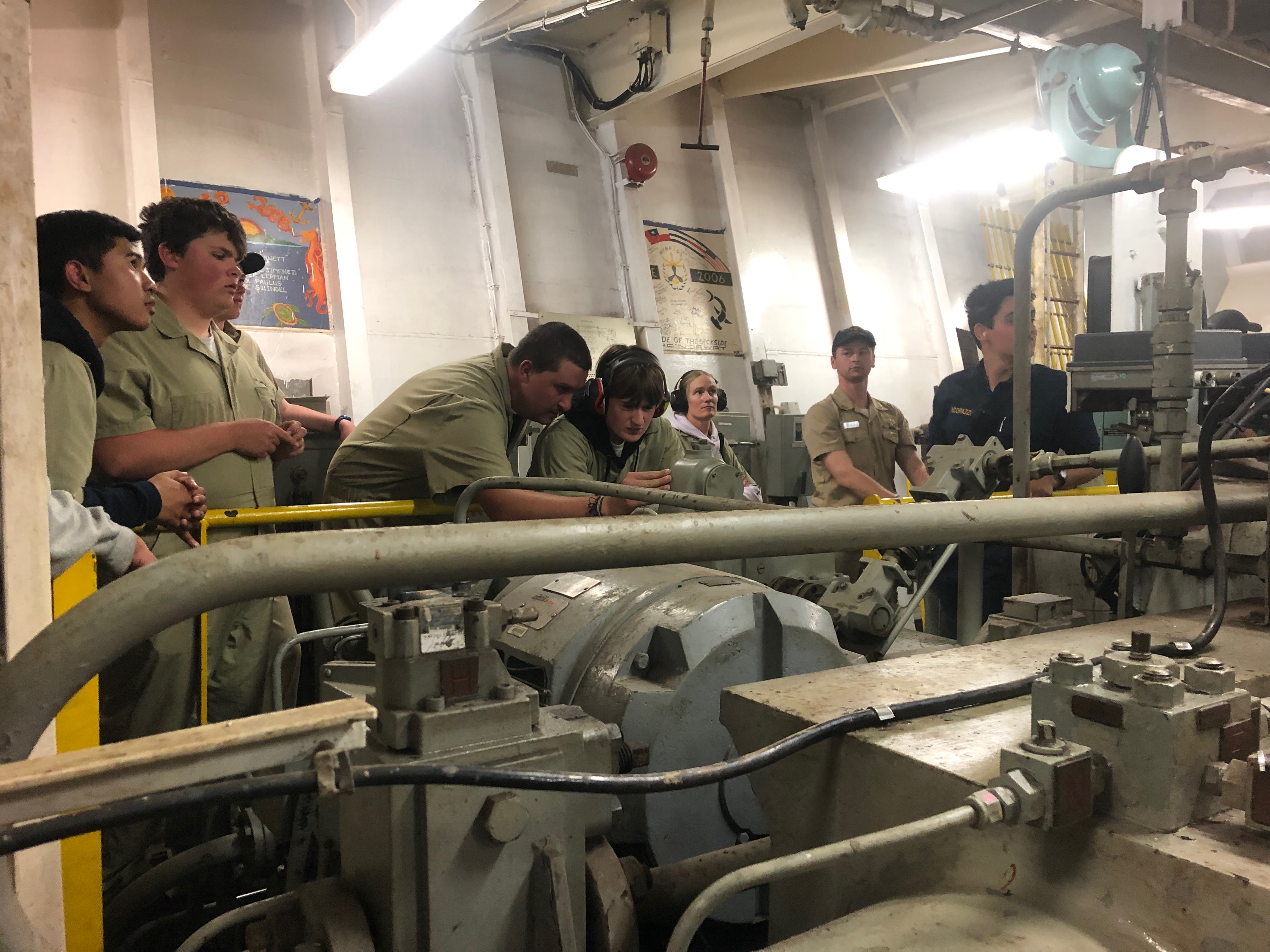 |
| 4D CO Jake Schollenberg helps 3C engineer Tobin Vaske learn how to control the rudder while 1C cadet Sophie Scopazzi gives commands | 4D CO Jake Schollenberg helps 3C engineer Nat Pierotti learn how to control the rudder |
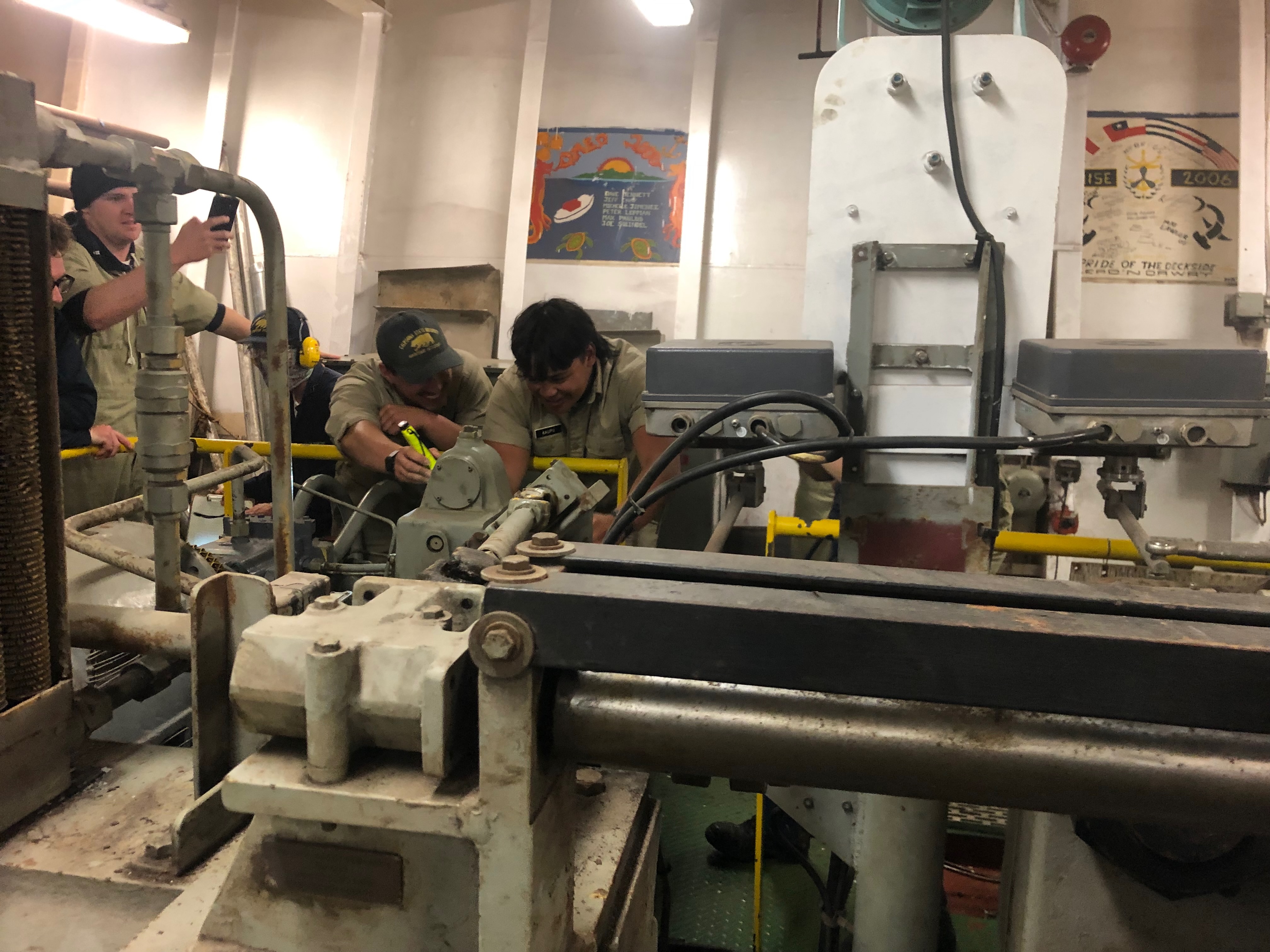
Cadet Third mate Solomon Kaupu controls the rudder while cadet second mate Danny Guzman lights the numbered notches behind the trick wheel
The final test of the day is to make sure the Emergency Diesel Generator is fully operational. So this means going to the generator which is not in the engine room, but is in the 03 deck forward house. Before going in, Chief Engineer Adam Kleitman briefed everyone as to what everyone would be checking when they got into the room which was checking oil and water levels. The room is quite small, so everyone filed in and each looked at the different compartments to ensure they were all satisfactory before starting up the generator and letting it run for about 15 minutes.
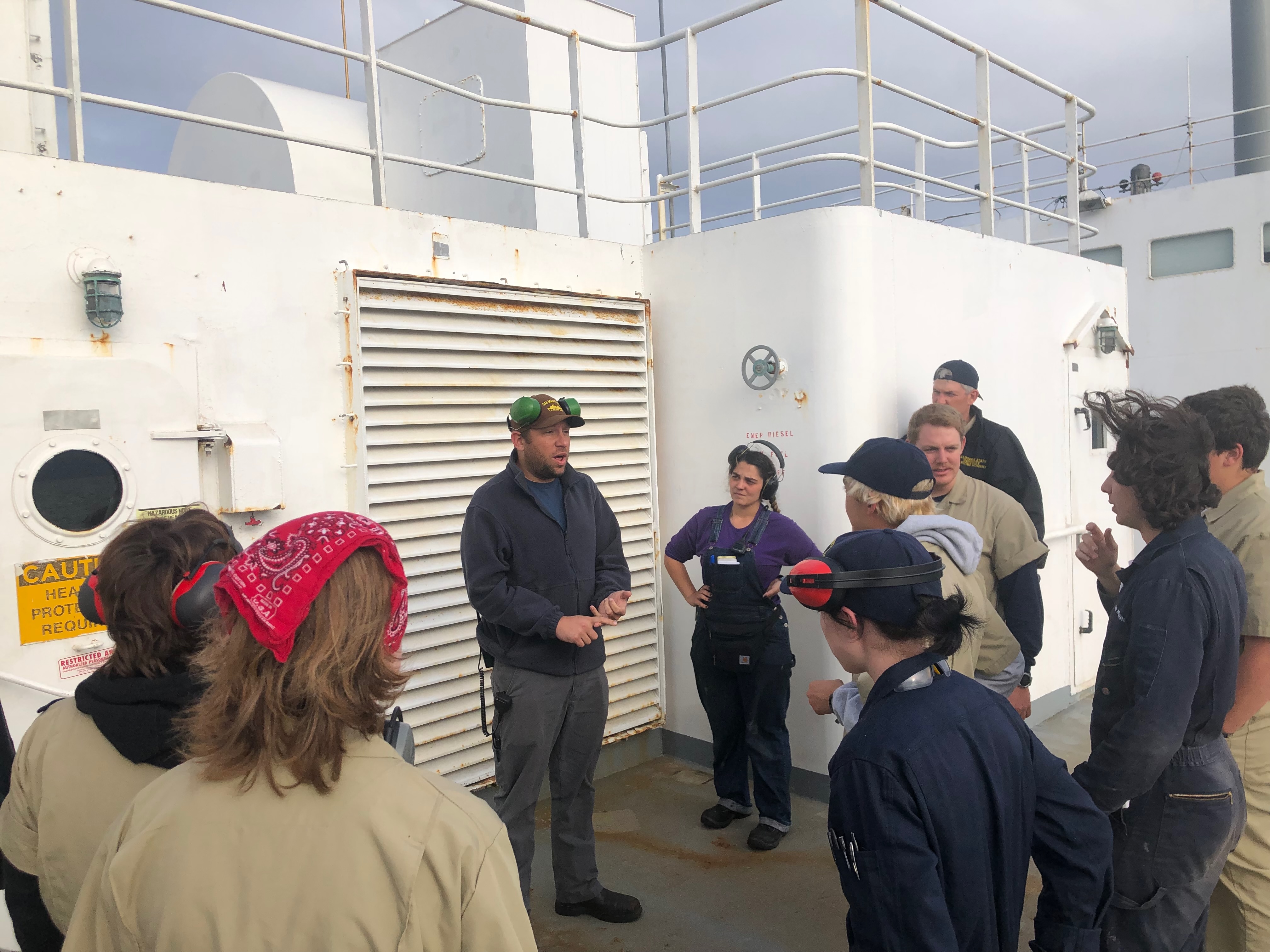 |
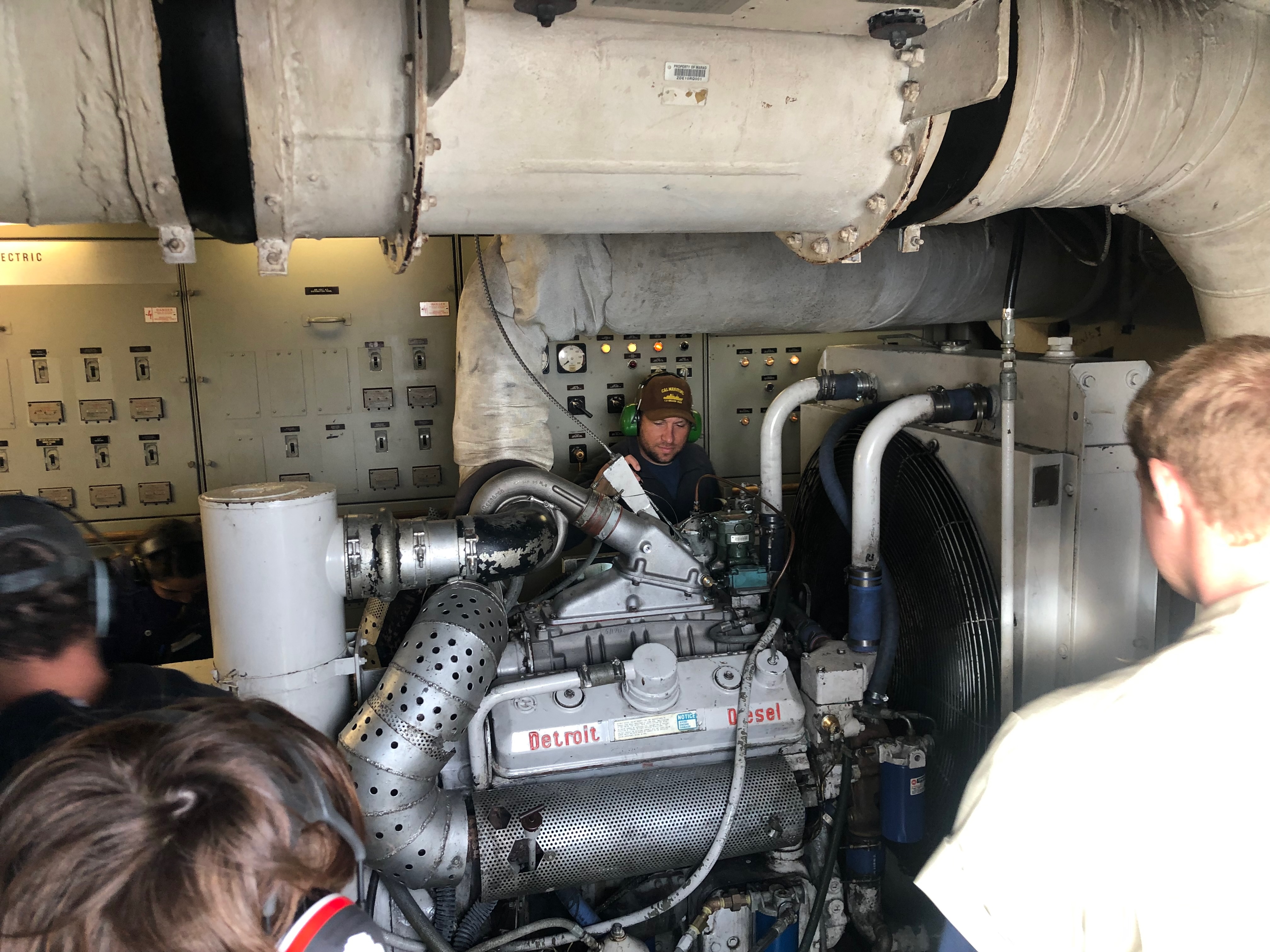 |
| Chief engineer Adam Kleitman debriefs eveyone on why there is an emergency diesel generator test | The genrator is up and running and will run for at least fifteen minutes to ensure it operates sufficiently |
All these tests and drills are necessary to ensure the ship is prepared to make her
way into port,
maneuvering safely in restricted waters, past hazards to navigation and among other
vessel traffic .
ABOUT CAL MARITIME
Established in 1929, California State University Maritime Academy is the only degree-granting
maritime academy on the West Coast. Located in Vallejo, California, the campus offers
undergraduate degrees that prepare students for careers in engineering, transportation,
international relations, business, and global logistics. Cal Maritime also offers
a master’s degree in Transportation and Engineering Management, as well as a number
of extended learning programs and courses.
